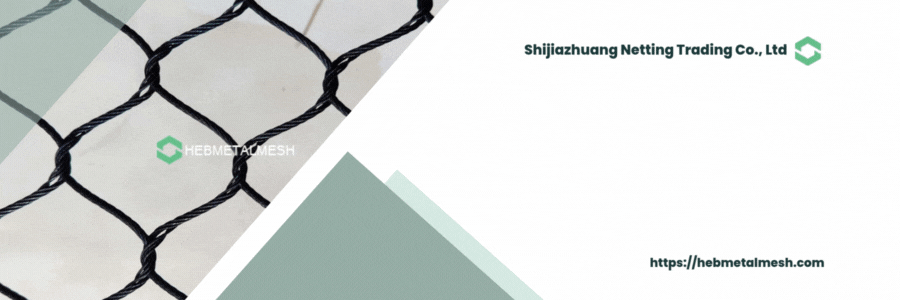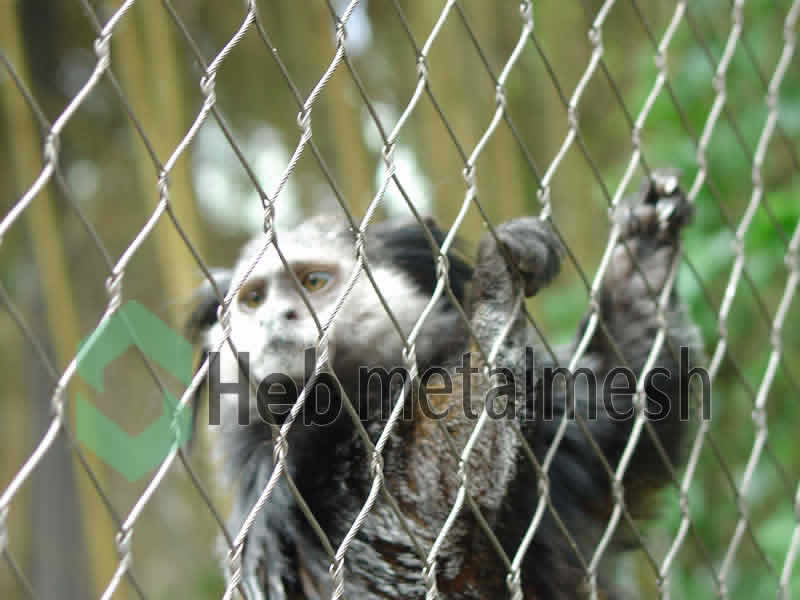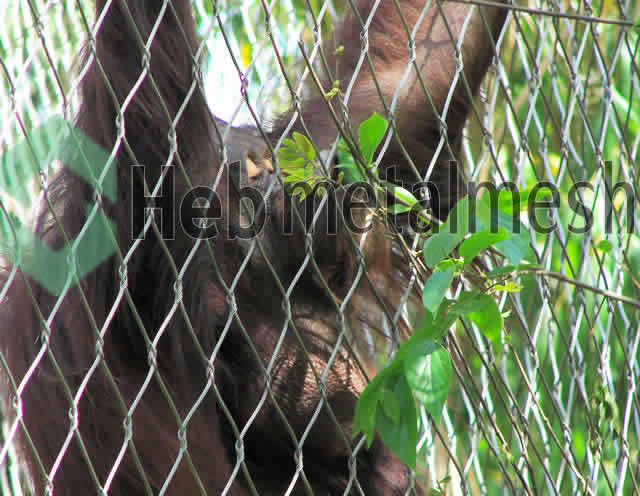Introduction to High-Security Zoo Mesh
The preservation of wildlife and the promotion of animal conservation are increasingly vital in today’s world. With the challenges of habitat loss, poaching, and human-wildlife conflict, zoos and wildlife parks serve as essential sanctuaries for various species. However, ensuring the safety of both the animals and the public within these facilities poses significant challenges. One of the most effective solutions to address these concerns is the implementation of high-security zoo mesh for predator enclosures.
High-security zoo mesh is specifically designed to withstand the unique demands of containing large and potentially dangerous animals. Unlike traditional fencing systems, this type of mesh offers a blend of strength, flexibility, and visibility, allowing for secure enclosures without compromising the view for visitors. The robust nature of high-security zoo mesh is essential in establishing effective barriers that prevent escapes and deter potential intrusions, thereby safeguarding the well-being of the animals and enriching the visitor experience.
Beyond mere physical protection, high-security zoo mesh also plays a significant role in promoting animal welfare. By providing enclosures that respect the animals’ natural behaviors while ensuring their safety, facilities can create environments conducive to physical and psychological health. The mesh allows for airflow and light penetration, which are crucial for the habitat’s ecological balance, while still serving as an impenetrable barrier against outside threats.
As zoos continue to evolve in their commitment to conservation and education, the utilization of high-security materials, such as specialized mesh, becomes paramount. This not only enhances the security of predator enclosures but also reflects a growing understanding of the importance of creating safe, engaging spaces for wildlife and visitors alike. The role of high-security zoo mesh in modern zoological institutions symbolizes a commitment to both safety and ethics in wildlife preservation.
What is High-Security Zoo Mesh?
High-security zoo mesh for predator enclosures is a specialized fencing solution designed to provide robust protection for wildlife while ensuring their safety and comfort. This type of mesh is engineered from strong, durable materials such as stainless steel or carbon steel, which can withstand the pressures exerted by animal movements and environmental factors. Its primary purpose is to create a formidable barrier that prevents both escape and unauthorized entry, thus prioritizing animal welfare and public safety in wildlife enclosures.
In terms of configuration, there are various types of high-security zoo mesh. One common variant is the welded wire mesh, which features a grid-like pattern of fused wires that enhances its structural integrity. Another option is the woven mesh, known for its flexibility and adaptability to different enclosure designs. The mesh can also vary in gauge thickness, with thicker wires offering enhanced strength, making them particularly suitable for larger and more powerful predators such as tigers, lions, and bears.
A critical aspect of high-security zoo mesh is its application in predator enclosures. These installations not only serve as physical barriers but also play a crucial role in maintaining the psychological well-being of the animals inside. By creating a secure environment, the mesh helps to reduce stress and anxiety in predators, allowing them to exhibit natural behaviors while remaining safe from external threats. Moreover, high-security zoo mesh can be designed with aesthetic considerations in mind, blending seamlessly into the surrounding habitat while fulfilling strict safety standards.
Overall, high-security zoo mesh for predator enclosures is an essential component in modern zoo management. Its use of durable materials and innovative designs ensures that both animals and visitors are protected, thereby fostering a more enriching experience in wildlife conservation efforts.
Why Choose Handwoven Stainless Steel Zoo Mesh?

When selecting materials for predator enclosures, safety and durability are paramount. Handwoven stainless steel zoo mesh stands out as an optimal choice due to its unique combination of strength, resilience, and corrosion resistance. Specifically, stainless steel 304 offers a range of properties that make it ideal for high-security settings, where the containment of wildlife is critical.
The strength of handwoven stainless steel provides superior structural integrity compared to alternative materials. Its robust design ensures that even the most formidable predators cannot breach the enclosure. This level of assurance significantly reduces the risk of escapes, thereby enhancing the overall safety of both the animals and the surrounding visitors. Furthermore, the handwoven aspect of this mesh adds an additional layer of flexibility, allowing for tailored configurations that can adapt to a variety of enclosure designs.
Durability is another pivotal advantage offered by stainless steel zoo mesh. Unlike other materials that may degrade over time due to environmental exposure, stainless steel maintains its integrity under harsh weather conditions, including UV exposure, rain, and temperature fluctuations. This longevity minimizes the need for frequent replacements, ultimately saving costs in the maintenance of high-security enclosures.
An essential aspect to consider is the resistance to corrosion that stainless steel 304 provides. Given that predator enclosures are often located in outdoor settings, exposure to moisture can lead to deterioration in other materials. However, stainless steel retains its appearance and functionality, ensuring that the enclosures remain visually appealing while upholding safety standards over time.
In conclusion, the unique properties of handwoven stainless steel zoo mesh make it a superior choice for high-security predator enclosures. Its strength, durability, and resistance to corrosion collectively contribute to creating a safe and long-lasting environment for wildlife in captivity.
Color Options in High-Security Zoo Mesh
When it comes to selecting high-security zoo mesh for predator enclosures, one of the key considerations is the aesthetic appeal provided by various color options. The two popular finishes available are the natural look and the black oxide finish. Each option presents unique advantages that not only enhance the visual experience of zoo visitors but also serve to benefit the animals within the enclosures.
The natural finish generally comprises earth tones that blend seamlessly into the surrounding environment. This color choice is particularly effective for wildlife displays, as it promotes a habitat-like ambience that may reduce stress for the animals. By utilizing high-security zoo mesh with a natural finish, zoos can create an environment that mimics the animals’ native habitats, allowing for a more authentic experience for both the animals and their observers. Moreover, this choice aids in camouflage, making it less likely for visitors to notice the enclosure barrier, thus enhancing their view of the animals.
On the other hand, the black oxide finish offers a sleek, modern aesthetic that’s particularly appealing in urban or contemporary zoo settings. This option not only provides a striking visual contrast against the greens and browns of the landscaping but also adds a layer of distinction to the predator enclosures. The dark finish can create a dramatic backdrop, enhancing the visibility of the animals, especially during daylight hours when their coloration might otherwise blend into the habitat. Additionally, high-security zoo mesh featuring a black oxide finish is resistant to fading and weathering, ensuring that the enclosures maintain their appearance over time.
Ultimately, the choice between natural and black oxide finishes for high-security zoo mesh depends on the specific objectives of the enclosure’s design, the species of animals housed, and the overall aesthetic goals of the zoo. Understanding these options allows zoo planners and designers to create spaces that not only prioritize safety but also celebrate the beauty of wildlife in a thoughtful manner.
Key Features of High-Security Zoo Mesh for Predator Enclosures
In the realm of wildlife conservation and habitat design, high-security zoo mesh for predator enclosures plays a pivotal role in safeguarding both the inhabitants and the visitors. Understanding its key features is essential for any institution planning to utilize this vital component in their structural planning.
One of the foremost characteristics is its tensile strength. This robust feature ensures that the mesh can withstand significant force, whether from the natural behaviors of the predators or external pressures. The mesh is designed to resist tearing and deformation, ensuring that enclosures remain secure and the animals within can express their natural behaviors without risk of escape. The structural integrity is crucial for preventing breaches that can compromise safety for both animals and humans.
Moreover, UV resistance is another essential feature of high-security zoo mesh. Given that these enclosures are typically exposed to various weather conditions, the mesh is engineered to withstand UV radiation without degrading over time. This durability extends the lifespan of the enclosure, reducing costs associated with replacement and maintenance. It ensures that the material remains effective in providing security while also being safe for animal welfare.
Maintenance ease is a practical aspect that enhances the usability of high-security zoo mesh for predator enclosures. The mesh is designed to be low-maintenance, allowing for easy cleaning and upkeep, which is vital for hygiene standards in animal care facilities. The materials used are often resistant to corrosion, further reducing the need for frequent repairs or replacements.
Collectively, the tensile strength, UV resistance, and ease of maintenance make high-security zoo mesh an indispensable element in the design of predator enclosures, creating a safe environment while also ensuring that the aesthetic aspects of the zoo remain intact.
How to Identify Quality Zoo Mesh Products
When selecting high-security zoo mesh for predator enclosures, it is critical to consider various factors that attest to the product’s quality and suitability for wildlife safety. The materials used in manufacturing zoo mesh play a significant role in determining its durability and effectiveness. Look for mesh constructed from stainless steel or other corrosion-resistant alloys, as these materials are known for their strength and longevity, making them ideal for outdoor environments where exposure to elements is a concern.
Another key aspect to evaluate is craftsmanship. High-quality zoo mesh should demonstrate excellent fabrication techniques, ensuring that all joints and fastenings are robust and secure. Inspect the welds carefully; they should be uniform and free from any visible defects. This attention to detail contributes to the overall structural integrity of the mesh, preventing potential breaks or failures that could endanger animals or visitors alike.
Certification from recognized standards organizations can also serve as an indicator of quality. Products that adhere to specific safety and manufacturing regulations provide additional assurance to zoo operators and animal caretakers. Seek zoo mesh options that have been tested and certified for use in animal enclosures, as this demonstrates compliance with industry best practices in animal welfare and safety.
Furthermore, consider the mesh’s design. High-security zoo mesh for predator enclosures must not only deter escape but also provide adequate ventilation and visibility for animals and guests. Explore different mesh sizes and configurations, assessing which variations suit the particular needs of the species being housed. By evaluating these critical factors, zoo operators can make informed purchasing decisions, ultimately enhancing the overall security and welfare of the animals in their care.
Questions to Consider When Searching for Zoo Mesh
When it comes to selecting high-security zoo mesh for predator enclosures, a series of important questions should be addressed to ensure the safety and well-being of the animals, as well as the peace of mind of their caretakers. One of the primary safety concerns is the durability and strength of the mesh. Potential buyers must evaluate whether the material used can withstand potential escape attempts and deter predators, ensuring the animals within remain secure. This evaluation will guide zoo personnel in assessing which specific type of high-security zoo mesh is most appropriate for their needs.
Another essential consideration is the expected lifespan of the selected mesh. Understanding the longevity of high-security zoo mesh for predator enclosures helps wildlife facilities budget their resources effectively. It is crucial to inquire about the manufacturer’s guarantees and maintenance recommendations. A product that offers a substantial lifespan can minimize the need for frequent replacements, ultimately benefitting both the budget and the welfare of the animals.
Moreover, the performance of the mesh in extreme weather conditions warrants exploration. Enclosures are often subject to varying climates, which may include intense heat, freezing temperatures, or heavy rain. One must question how well the chosen high-security zoo mesh can withstand such environmental factors. Adequate performance in harsh weather protects against wear and tear, ensuring safety and stability throughout the seasons.
Considering these questions will guide zoo operators in making informed decisions. Knowing the critical aspects of safety, longevity, and environmental durability ensures that the selected high-security zoo mesh meets their specific needs for predator enclosures, ultimately fostering a safe and secure habitat for wildlife.
Frequently Asked Questions about High-Security Zoo Mesh
When considering high-security zoo mesh for predator enclosures, potential buyers often have numerous questions regarding its application, maintenance, and advantages compared to other enclosure types. Here we address some of the frequently asked questions to provide clarity and aid informed decision-making.
What are the installation procedures for high-security zoo mesh? Installation typically involves several key steps to ensure that the mesh functions effectively as a barrier. First, it’s essential to survey the area where the enclosure will be situated to determine the appropriate dimensions and layout. Once planned, the mesh is usually secured to a sturdy structure, ensuring that it is taut and well-supported. Many professionals recommend having trained staff handle the installation to maintain safety and integrity, as improper installation can compromise the enclosure’s effectiveness.
How do I care for and maintain high-security zoo mesh? Regular maintenance is vital to safeguarding the strength and longevity of high-security zoo mesh. Inspecting the mesh for rust, wear, or any physical damage should be part of routine checks, especially in adverse weather conditions. Cleaning the mesh with gentle cleansers and ensuring that it remains free from debris can help maintain its aesthetic appeal and functional quality. Additionally, addressing any minor issues promptly can prevent larger problems from arising.
How does high-security zoo mesh compare to other types of enclosures? High-security zoo mesh offers a unique combination of visibility, durability, and safety. Unlike traditional solid barriers, this type provides excellent visibility for both the animals and the audience, enhancing the viewing experience while maintaining safety standards. Moreover, its robust materials are designed to withstand physical stresses that may be exerted by predator animals, making it a preferable choice for institutions prioritizing both aesthetics and security.
In conclusion, understanding the installation procedures, maintenance requirements, and comparisons with other enclosure types is crucial when considering high-security zoo mesh. By ensuring these aspects are addressed, wildlife facilities can enhance their predator enclosures effectively while promoting a safe environment.
Conclusion: Make the Right Choice for Your Predator Enclosure
In considering the effective safety measures for predator enclosures, the importance of choosing high-security zoo mesh cannot be overstated. This innovative solution not only provides a formidable barrier against both natural predators and human threats, but also offers aesthetic value that blends seamlessly into the zoo environment. Investing in high-security zoo mesh for predator enclosures ensures the safety and well-being of the animals while maintaining a visually appealing display for visitors.
The durability and strength of handwoven stainless steel mesh are critical characteristics that allow it to withstand the relatively aggressive behaviors of large animals. Unlike conventional barriers, high-security mesh is designed to endure extreme weather conditions and physical wear, reducing maintenance costs over time. Additionally, its transparent structure promotes visibility, enabling visitors to observe these magnificent creatures up close without compromising their safety and security.
Choosing the right kind of enclosure materials is integral to maintaining the health and safety of the wildlife within. High-security zoo mesh for predator enclosures not only secures the inhabitants but also fosters a responsible zoos and wildlife organizations’ commitment to the conservation of these species. In constructing enclosures with this specialized mesh, caregivers can reduce stress among animals and allow for more natural behaviors. Therefore, it becomes essential for zoos and sanctuaries to prioritize such quality materials.
As we reach the end of this guide, we encourage all wildlife facility managers and decision-makers to assess their current enclosures critically. Consider the long-term benefits of integrating high-security zoo mesh into your design plans. By making this choice, you are not only safeguarding your animals but also pledging to provide a safer and more engaging experience for your visitors. Take action now and invest in handwoven stainless steel mesh, the top choice for predator enclosures!



